In this article, we take an educationally informative and fun journey into the fascinating world of ostriches through our collection of ostrich coloring pages. These printable illustrations not only offer hours of coloring enjoyment but also serve as an engaging tool to introduce kids to the magnificent flightless bird known for its distinctive appearance and intriguing characteristics. So, grab your favorite coloring tools and let’s embark on an adventure to bring these magnificent creatures to life on paper as we learn all about them.
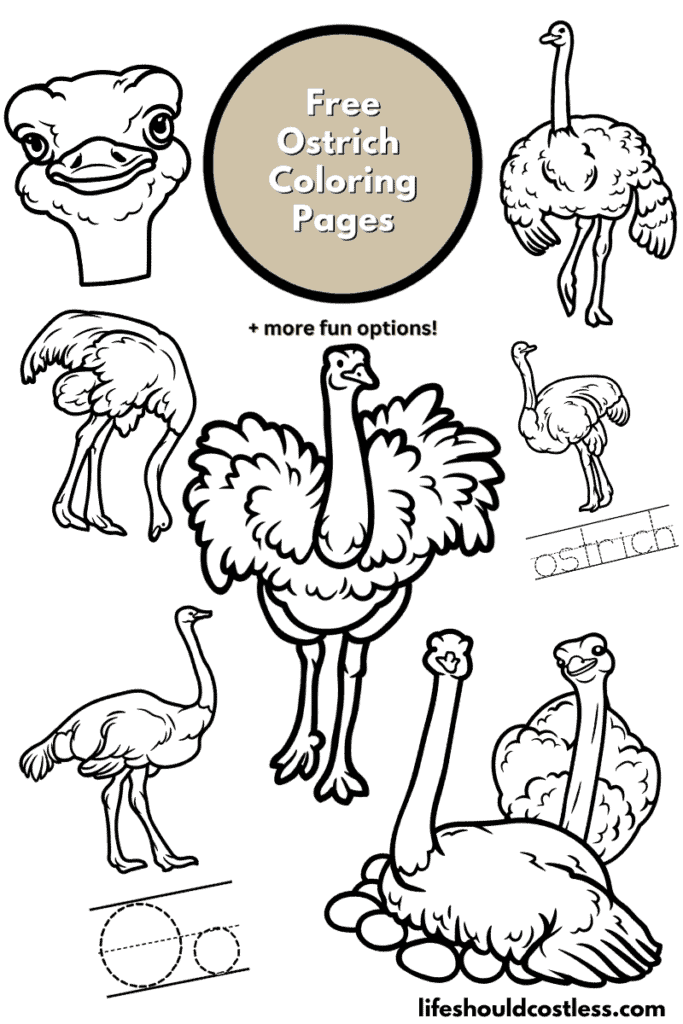
Simply select the design that appeals to you most, download the free PDF template, print it, and enjoy coloring to your heart’s content.
Alternatively, these designs can also serve as embroidery patterns or provide inspiration for creating delicate, fine-line tattoos.
Table of Contents, Skip Ahead To What You're Looking For
Ostrich facts
For those who are new to my coloring pages, it’s important to mention that I enjoy offering you the opportunity to delve into the subject matter, allowing for an enriching educational experience as you color.
So, without further ado, let’s get started on this educational journey!
Ostriches are truly fascinating birds with many interesting facts about them.
Here are several fun and intriguing tidbits that you’re going to want to know:
- Size and Weight: Ostriches are the largest and heaviest birds in the world. They can reach heights of up to 9 feet (2.7 meters) and weigh as much as 340 pounds (154 kilograms). Despite their size, they are flightless birds.
- Speed Demons: These birds are renowned for their incredible running abilities. Ostriches can sprint at speeds of up to 45 miles per hour (72 kilometers per hour), making them the fastest land birds on Earth.
- Large Eyes: Ostriches have the largest eyes of any land animal, measuring about 2 inches (5 centimeters) in diameter. Their keen eyesight helps them spot predators from a distance.
- Long Legs: Their long legs are not only built for speed but also for covering large distances efficiently. Ostriches can take strides of up to 10 feet (3 meters) in a single step.
- Dietary Variety: Ostriches are omnivorous birds, and their diet includes a wide range of items. They primarily feed on plants like grasses and seeds, but they also eat insects, small mammals, and even the occasional small reptile.
- Unique Digestion: Ostriches have a unique digestive system. They swallow small stones and pebbles, known as gastroliths, which help grind down their food in their muscular gizzard, as they lack teeth.
- Incredible Eggs: Ostriches lay the largest eggs of any bird species. These eggs can weigh up to 3 pounds (1.4 kilograms) and are so strong that they can support the weight of an adult human standing on them without breaking.
- Parental Care: Ostriches are known for their cooperative breeding behaviors. Males and females take turns incubating their eggs. During the day, the lighter-colored females tend to incubate while the darker males take the night shift, using their dark plumage for camouflage.
- Vocalizations: Ostriches communicate through a variety of vocalizations, including grunts, hisses, and booming calls. Males often make booming sounds to attract females during the breeding season.
- Dust Baths: These birds often take dust baths, which help them remove parasites and excess oil from their feathers. They roll in dry soil and then shake themselves vigorously to clean their plumage.
- Predator Deterrence: When threatened, ostriches use their powerful legs to kick attackers. A single kick from an ostrich can be lethal to a predator, such as a lion (I actually grew up next-door to an ostrich farm and was quite terrified of them knowing just how strong they are).
- Long Lifespan: In the wild, ostriches typically live for 30 to 40 years, while in captivity, they can reach up to 60 years of age.
- Conservation Status: Ostriches are classified as “Least Concern” by the International Union for Conservation of Nature (IUCN) due to their widespread distribution and stable populations. They are found in various African countries, including South Africa, Namibia, and Kenya.
These intriguing facts about ostriches highlight their unique characteristics and adaptations that have allowed them to thrive in diverse environments across Africa.
We learned a lot but there’s definitely more to know about ostriches.
If you would like to keep reading, here are some other reputable resources to learn about them.:
- https://en.wikipedia.org/wiki/Ostrich
- https://kids.nationalgeographic.com/animals/birds/facts/ostrich
- https://kids.britannica.com/kids/article/ostrich/353578
- https://animals.sandiegozoo.org/animals/ostrich
- https://nationalzoo.si.edu/animals/news/how-fast-ostrich-and-more-fun-facts
- To see all of my free printables, go here.
- To see an alphabetized index of all of my coloring pages, go here.
- To see all of my Animals coloring pages, go here.
- To see all of my Birds coloring pages, go here.
Coloring tips
Coloring a picture of an ostrich can be a fun and creative activity.
Here are some of my best tips and tricks to help you make the most of your ostrich coloring experience:
- Reference Images: Look at reference images of real ostriches or illustrations to understand their natural colors and markings. This will help you make your coloring page look more realistic.
- Color Swatches: Gather your coloring materials, such as colored pencils, markers, or crayons. Create a color swatch or chart to see how your colors will look on paper and choose the shades that match an ostrich’s plumage.
- Start Light: Begin with lighter colors and gradually build up to darker shades. This technique allows you to layer colors and create depth and dimension in your ostrich.
- Blending: Experiment with blending techniques to achieve a smoother and more realistic appearance. You can use blending pencils, tissue paper, or even your fingers to blend colors together.
- Feather Texture: Pay attention to the texture of an ostrich’s feathers. Use short, light strokes to mimic the appearance of feathers, especially on the ostrich’s body and wings.
- Contrasting Colors: Add contrasting colors for the beak, legs, and eyes to make them stand out. Ostriches typically have black or dark brown beaks and legs.
- Background: Consider adding a background to your coloring page to provide context and make your ostrich illustration pop. A savannah or desert scene can be a great choice.
- Shadows and Highlights: Use shading to create shadows and highlights. Think about where the light source is coming from and apply shading accordingly to give your ostrich a three-dimensional look.
- Color Variety: Don’t be afraid to experiment with colors. While real ostriches are usually shades of brown and gray, you can add subtle variations and pops of color to make your artwork unique.
- Take Your Time: Coloring can be a relaxing activity, so take your time and enjoy the process. Don’t rush through it, and if you need to take breaks, feel free to do so.
- Protect Your Work: If you’re using markers or pens, place a blank sheet of paper under your hand to prevent smudging. For colored pencils, consider using a fixative spray to preserve your artwork.
- Practice Makes Perfect: Coloring is a skill that improves with practice. Don’t be discouraged if your first attempts don’t turn out as you hoped. Keep practicing, and you’ll get better with each coloring page.
- Personalize: Feel free to add your own creative touches to the coloring page. You can create patterns on the ostrich’s feathers, add accessories, or even turn it into a whimsical character.
Remember, there are no strict rules when it comes to coloring, so let your imagination run wild and have fun expressing your creativity through your ostrich artwork!
Options For Printing:
Letter O is for ostrich writing practice worksheets
*My letter o is for ostrich coloring sheet printables are specifically designed to be used in a classroom setting, they are the only printable options on this page that do not need written permission to use in a public setting.
Please send the link to this post along if anyone asks you where you got them. Thank you!
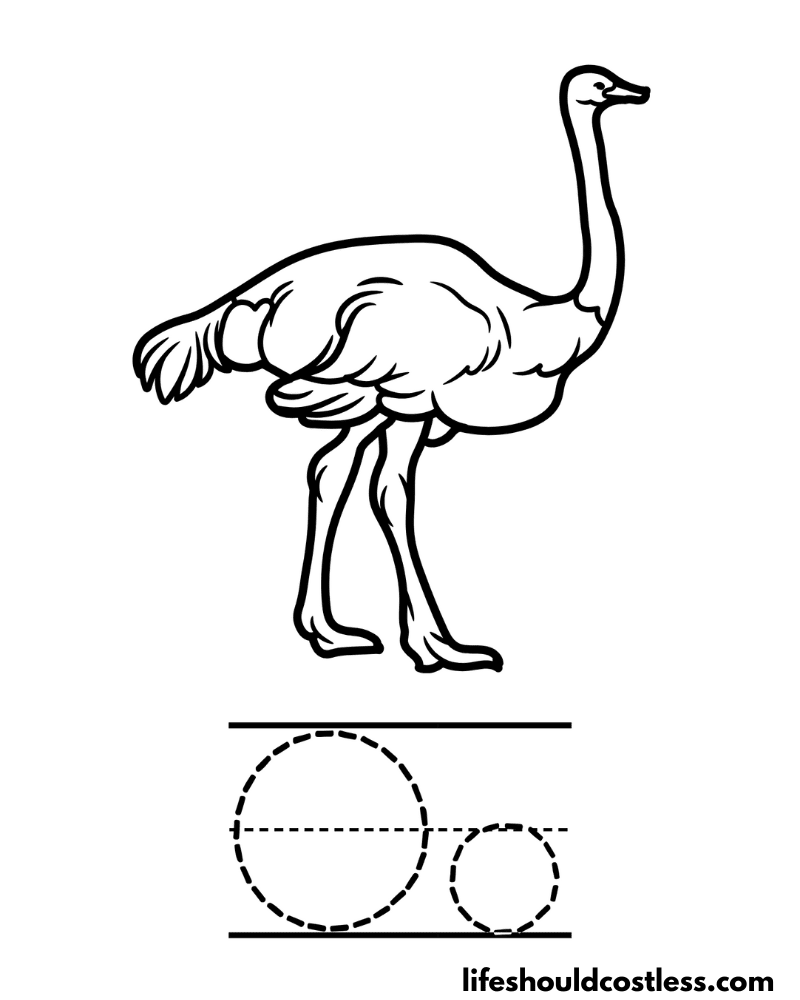
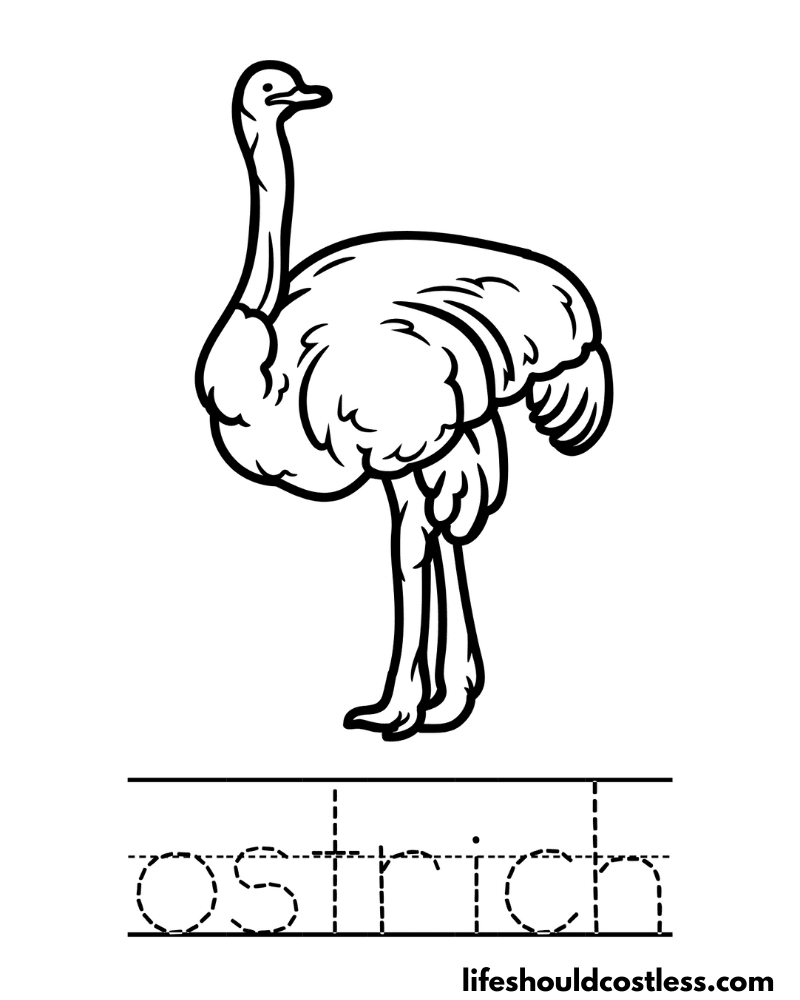
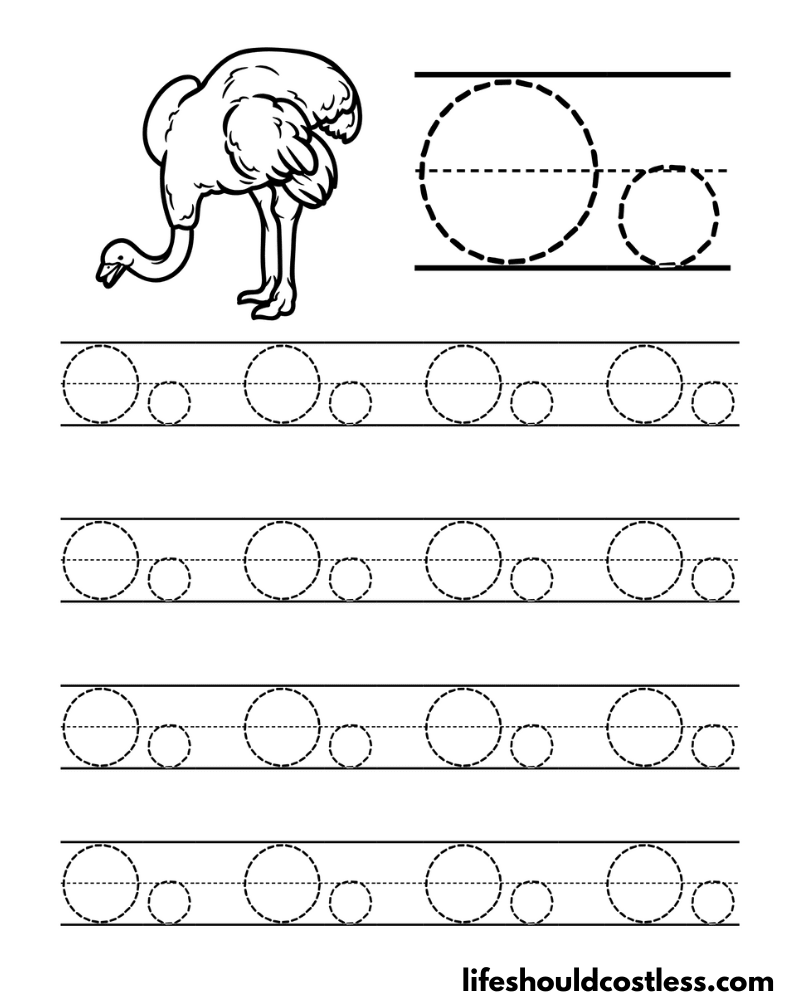
Various ostrich designs
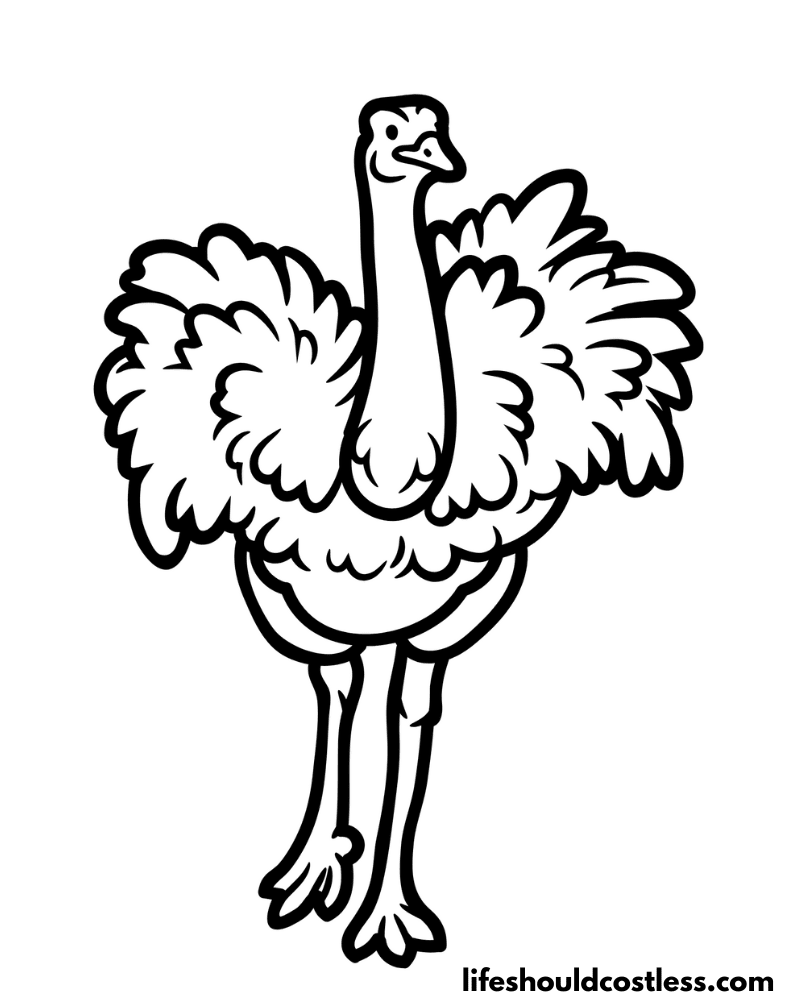
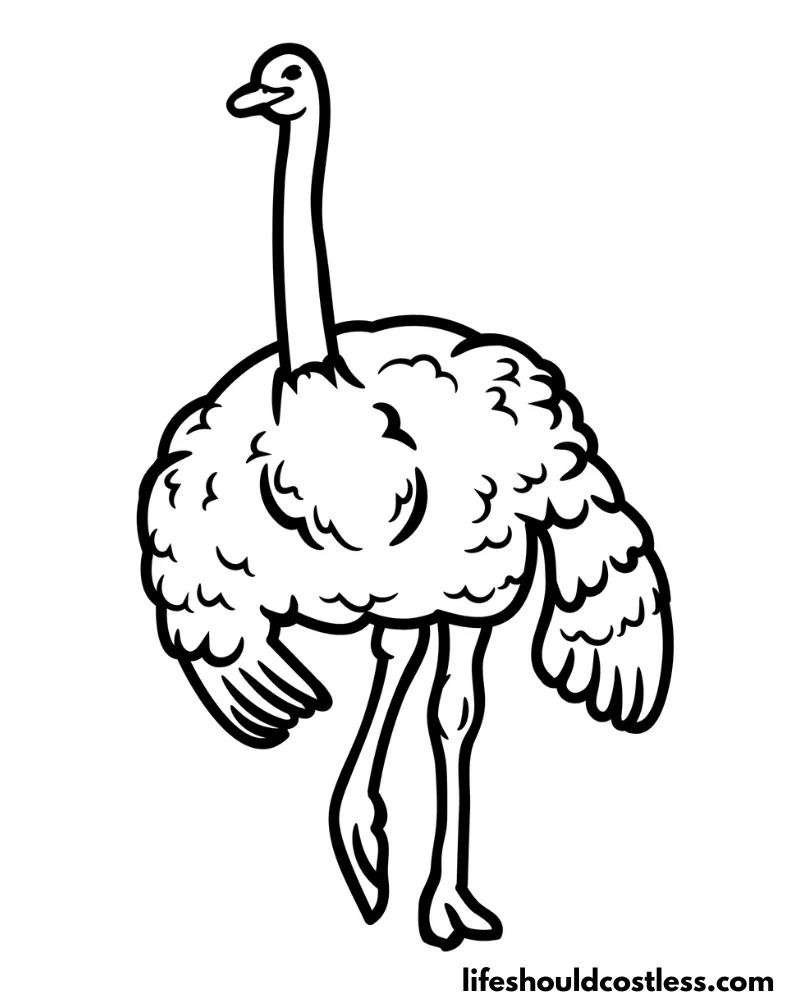

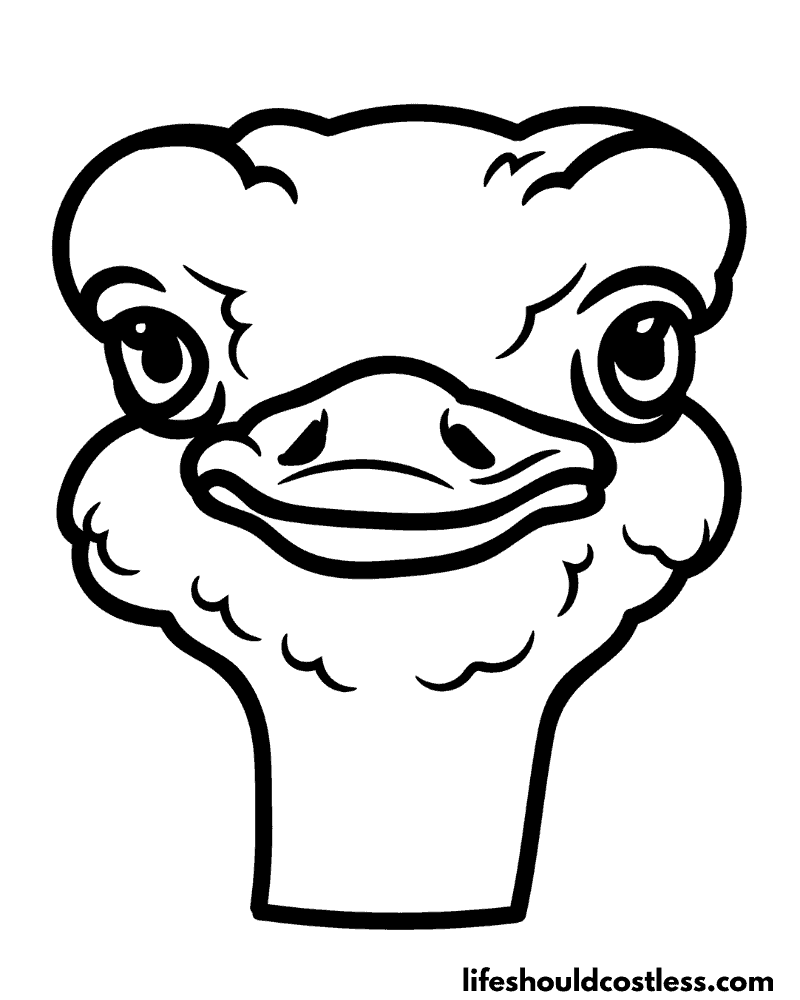

FAQ’s
Ostriches are primarily grayish-brown in color, which provides them with excellent camouflage in their natural habitat.
However, their plumage and skin can vary slightly depending on the specific subspecies and age of the ostrich. Here are some key color variations in ostriches:
Gray-Brown Plumage: Adult ostriches typically have grayish-brown feathers covering most of their bodies. These feathers are adapted to blend in with the dry, grassy environments where they are commonly found.
Black and White: Ostriches have striking black and white coloration on their wings and tail feathers. When an ostrich stretches its wings or tail feathers, the contrasting black and white colors become more visible.
Pink Skin: Ostriches have pinkish-gray skin on their necks and legs, which may appear more pinkish when they are flushed with blood during certain behaviors or environmental conditions.
Reddish Legs and Beak: Their legs and beaks are typically reddish or pinkish in color. These colors are more pronounced in males and may vary slightly among individuals.
Juvenile Plumage: Young ostriches, especially chicks, have a different coloration. They are often covered in soft, downy feathers that are gray or brown, providing them with some camouflage. As they mature, their feathers gradually develop into the adult plumage.
It’s important to note that ostriches can adapt to various environments and may exhibit slight variations in coloration based on their geographic range, gender, and subspecies.
Overall, their combination of grayish-brown feathers, black and white wing and tail feathers, and pinkish skin make ostriches a unique and interesting bird to observe and color.
*I will add more ostrich color questions and answers as the questions get sent to me.
Conclusion
In conclusion, exploring the world of ostrich coloring pages is not only a creative endeavor but also an educational one.
As we’ve delved into these fun illustrations, we’ve not only enjoyed the sheer joy of coloring but also embarked on a fascinating journey to learn more about these remarkable flightless birds.
From their extraordinary speed and size to their unique feathered patterns, there’s a wealth of information to discover while bringing these majestic creatures to life on paper.
Whether you’re a seasoned artist or a budding colorist, these ostrich coloring sheets offer a canvas for your imagination to soar.
They provide an opportunity to experiment with colors, textures, and shading, all while gaining a deeper appreciation for the intricate beauty of the ostrich.
So, as you pick up your coloring tools and immerse yourself in this creative adventure, remember that coloring isn’t just about filling spaces with hues—it’s about nurturing curiosity, enhancing motor skills, and, most importantly, having fun.
Let the vibrancy of your chosen colors mirror the vibrancy of these extraordinary birds, and may your artistic journey continue to flourish with every stroke on your coloring page.
Thanks so much for stopping by my blog and supporting my endeavors to make people’s lives a little easier/better/more affordable.
If you liked this post, or found it helpful in any way, please make sure to share it with your family, friends, and co-workers via social media.
Or you could even send them the direct link via email. Whichever way you choose to spread the love, I super appreciate it! ~Sarah
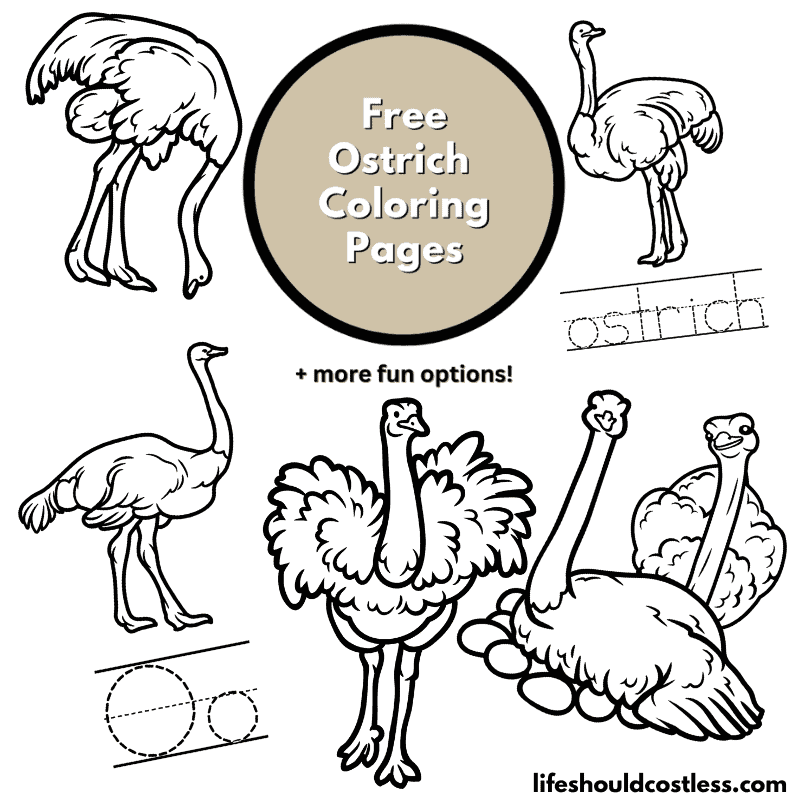
How to follow & support this site
- If you would like to subscribe to my email list, go here.
- Make sure to follow along via social media, by going here.
- If you would like to learn how to really show your support to this site (at no cost to you), go here.
- If you would like to make a direct donation to the site, go here.
Check out my other free printables
- To see all of my free printables, go here.
- To see an alphabetized index of all of my coloring pages, go here.
- To see all of my Animals coloring pages, go here.
- To see all of my Birds coloring pages, go here.
Otherwise, here are direct links to several of my other related articles that you’re also going to love:
Animals / Birds
Animals / Mammals
Animals / Insects
Other good resources for a printable ostrich
- https://clipart-library.com/ostrich-coloring-page.html
- https://www.colormegood.com/animals/birds/ostrich.html
- https://www.first-school.ws/theme/animals/cp_birds/ostrich-coloring-pages.htm
*This post was originally shared to this blog on 10/09/2023, and has since been updated to improve user experience, add video instruction, as well as to make it as shareable as possible across the social medias.
**Please note that I do try my hardest to provide factual, but easy to understand, information about each topic. If you notice a discrepancy in my coloring pages, facts, or see something that you deem “misinformation/incorrect” please make sure to notify me about it. I would prefer that you send me an email with a link to a more reputable resource on that subject, so that I can correct it as soon as possible. Thanks so much for helping this site become the best that it can be!
***Resources from djinkers were used in the production of this article.
***Resources from djinkers were used in the production of this article.
